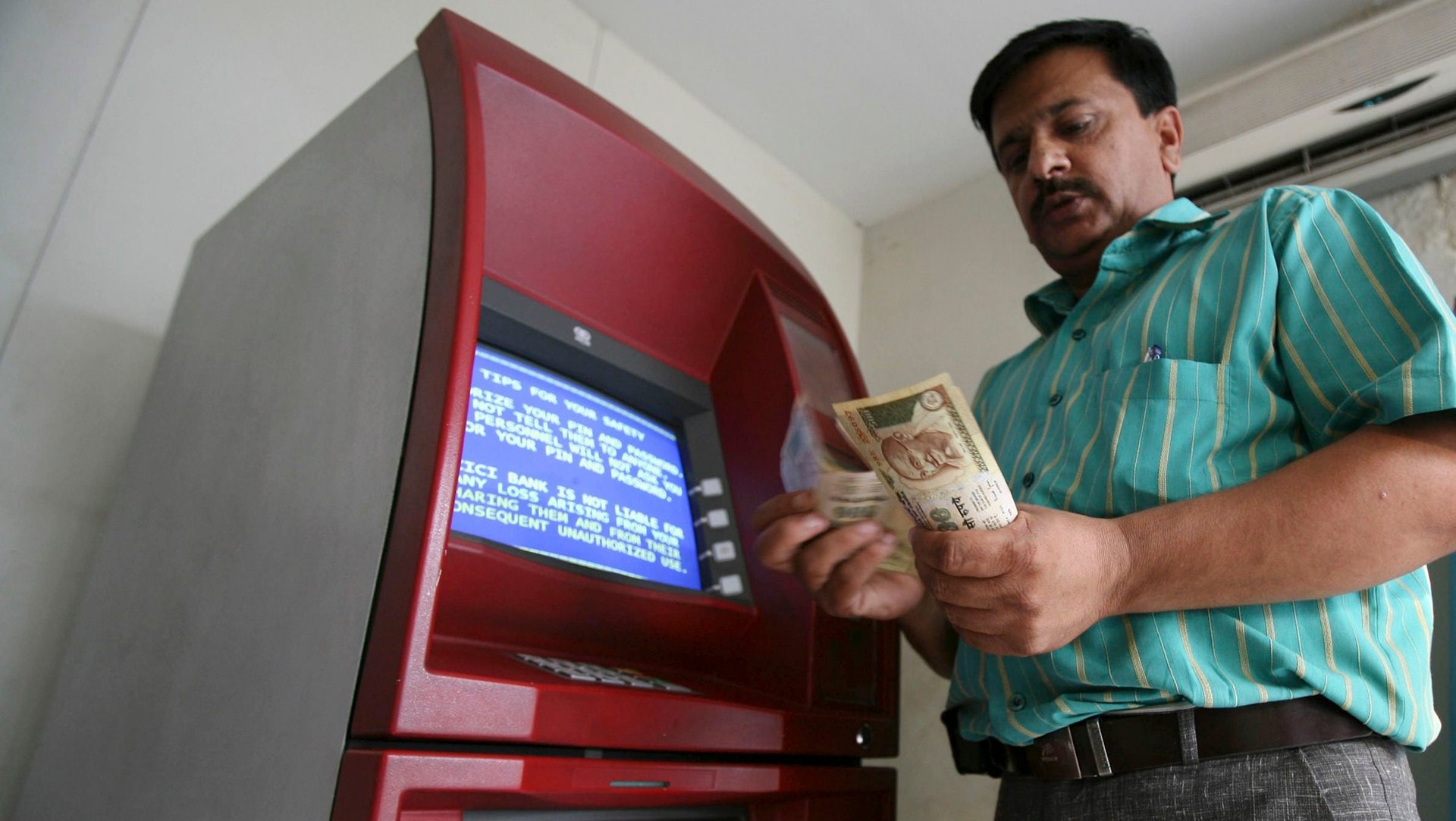Security guards won’t keep India’s ATMs safe—but these tactics might
Today, officials in Karnataka, India will shut down every ATM located in low-traffic, high-crime areas. This is the latest response to a spate of brutal attacks, muggings, and armed robberies that have plagued ATMs across the country. After a robber with a machete attacked a bank manager making an ATM withdrawal last month, state officials have required the installation of security guards and addition of cameras and alarms by January. But it is unlikely that these state-level initiatives will adequately address the country’s widespread ATM crime.


Today, officials in Karnataka, India will shut down every ATM located in low-traffic, high-crime areas. This is the latest response to a spate of brutal attacks, muggings, and armed robberies that have plagued ATMs across the country. After a robber with a machete attacked a bank manager making an ATM withdrawal last month, state officials have required the installation of security guards and addition of cameras and alarms by January. But it is unlikely that these state-level initiatives will adequately address the country’s widespread ATM crime.
What’s needed, according to banking security experts, is a collection of overlapping security measures that discourage and thwart thieves as well as protect and reassure bank patrons. More effective security is imperative given that Indian ATM industry insiders expect the numbers of ATMs to nearly triple, from 140,000 this year to 400,000 by 2017.
Quartz spoke to Robert Evans of Nautilus Hyosung, makers of a widely-used ATM line in India, and Som Gangopadhyay, senior vice president of bank security and secure storage for Gunnebo Security Group in India. Here’s what Indian banking and law enforcement authorities should do, based on their expert advice:
Layer security measures: No one policy or technology can definitively prevent an attack on its own. Video monitoring alone isn’t enough—without humans monitoring the live video feeds, there’s no way authorities can rapidly respond to an ATM crime. Gangopadhyay advised that a higher degree of safety can be achieved with various stages of protection: remote alarms that automatically contact authorities if a bank patron repeatedly fails to correctly enter his PIN, redundant video surveillance, and secure ATM vestibules.
Cooperation between authorities, ATM manufacturers, and bank stakeholders: This is crucial to insure that the security efforts work together. The sheer numbers of ATMs and size of the country make it difficult for ATM manufacturers, police, and banks to coordinate security. But this type of coordination could discourage thieves from seeking the most vulnerable locations and establishes that ATMs are no longer easy pickings for criminals. Yet with much future ATM growth expected in vulnerable rural areas, this is easier said than done.
Strategic ATM placement: When locating ATMs, banks and financial institutions should take advantage of “natural surveillance.” That means leveraging citizen eyeballs, placing more ATMs along the street in high-traffic areas, retail establishments, and well-lit public places.
Make night patrols of ATMs in heavy urban areas a police priority. This is a powerful deterrent and increases the chances that police will be in close enough proximity to pursue robbers.
Cultivate an informed and cautious citizenry: Evans told Quartz that “empirical data suggest that if a cardholder can avoid two situations—using a device in, 1. a dark environment and 2. alone—they reduce their chance of being victimized by a violent crime of opportunity by 95%.” This research is based on the North American market, but Gangopadhyay agreed that the principle applies to India as well: “When citizens are more active and vigilant many crimes can be stopped, and I think this is true all over the world.”